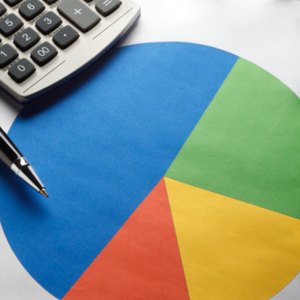
The portfolio risk premium is the amount of risk your portfolio has that is above the risk-free rate. In order to calculate portfolio risk premium, you need to know the expected return on your portfolio and the risk-free rate. Normally, investors use the 90-day Treasury-Bill rate for the risk-free rate. Businesses need to provide investors a return over the risk-free rate in order to get investors to invest. If it is a risk investment, the portfolio risk premium increases.
Go to the Federal Reserve T-Bill rate page, located in the resources and find the rate on the bills for the current month. This is the risk-free rate.
Determine the amount the investment expects to make during the life of the investment. This is the expected return.
Subtract the risk-free rate from the expected return to determine portfolio risk premium.
References
- Market Volume: Risk Premium
- Bank Rate: Treasury Bills
- Aswath Damodaran. "Equity Risk Premiums (ERP): Determinants, Estimation and Implications – The 2019 Edition," Page 28. Accessed May 27, 2020.
- Corporate Finance Institute. "What Is Risk Free Rate?" Accessed May 27, 2020.
- Pablo Fernández. "Market Risk Premium: Required, Historical, and Expected," Page 1. Accessed May 27, 2020.
- Pablo Fernández. "Market Risk Premium: Required, Historical, and Expected," Page 14. Accessed May 27, 2020.
Writer Bio
Carter McBride started writing in 2007 with CMBA's IP section. He has written for Bureau of National Affairs, Inc and various websites. He received a CALI Award for The Actual Impact of MasterCard's Initial Public Offering in 2008. McBride is an attorney with a Juris Doctor from Case Western Reserve University and a Master of Science in accounting from the University of Connecticut.

